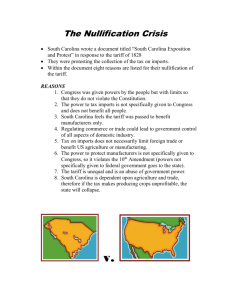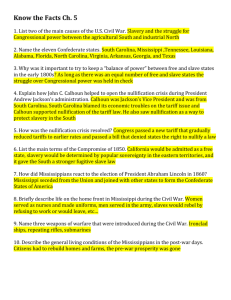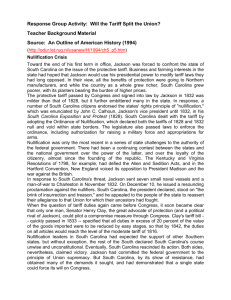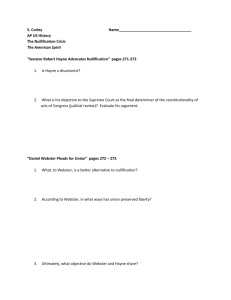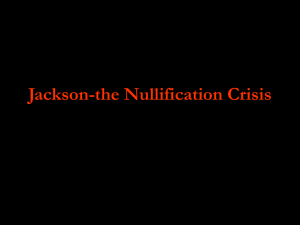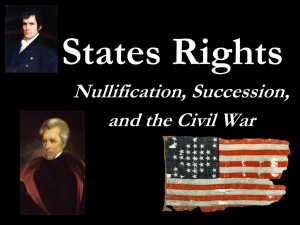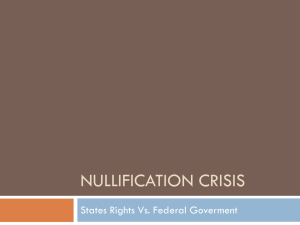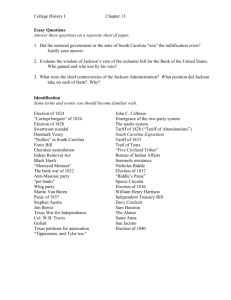The Tariff of Abominations, 1828 The South Carolina Exposition and
advertisement
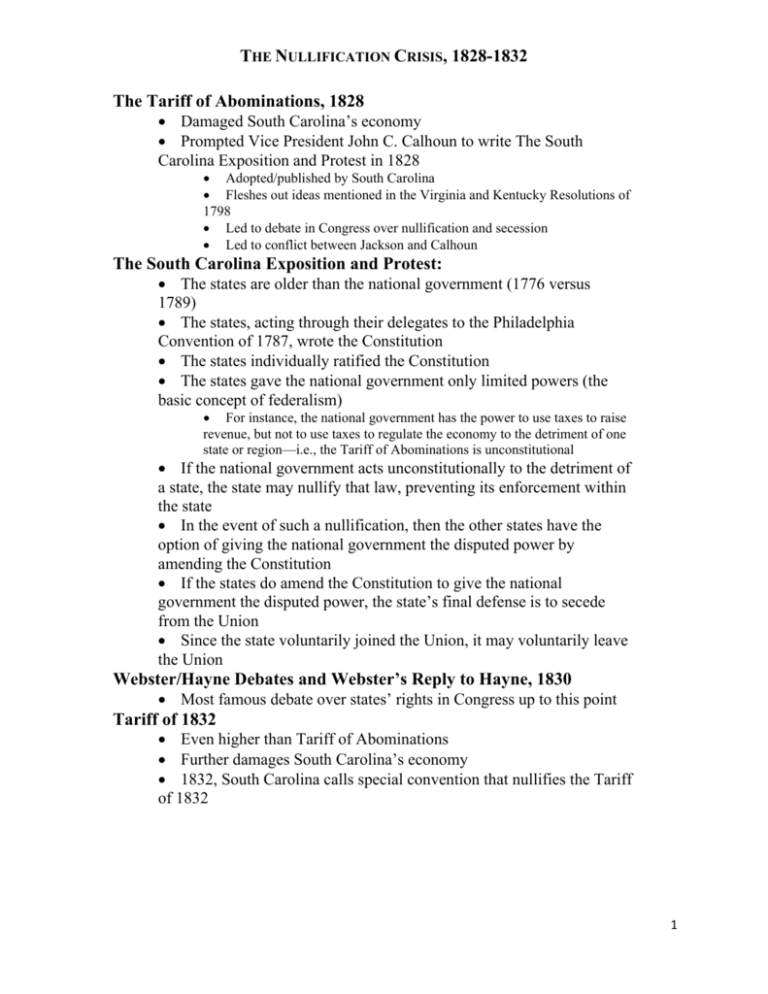
THE NULLIFICATION CRISIS, 1828-1832 The Tariff of Abominations, 1828 Damaged South Carolina’s economy Prompted Vice President John C. Calhoun to write The South Carolina Exposition and Protest in 1828 Adopted/published by South Carolina Fleshes out ideas mentioned in the Virginia and Kentucky Resolutions of 1798 Led to debate in Congress over nullification and secession Led to conflict between Jackson and Calhoun The South Carolina Exposition and Protest: The states are older than the national government (1776 versus 1789) The states, acting through their delegates to the Philadelphia Convention of 1787, wrote the Constitution The states individually ratified the Constitution The states gave the national government only limited powers (the basic concept of federalism) For instance, the national government has the power to use taxes to raise revenue, but not to use taxes to regulate the economy to the detriment of one state or region—i.e., the Tariff of Abominations is unconstitutional If the national government acts unconstitutionally to the detriment of a state, the state may nullify that law, preventing its enforcement within the state In the event of such a nullification, then the other states have the option of giving the national government the disputed power by amending the Constitution If the states do amend the Constitution to give the national government the disputed power, the state’s final defense is to secede from the Union Since the state voluntarily joined the Union, it may voluntarily leave the Union Webster/Hayne Debates and Webster’s Reply to Hayne, 1830 Most famous debate over states’ rights in Congress up to this point Tariff of 1832 Even higher than Tariff of Abominations Further damages South Carolina’s economy 1832, South Carolina calls special convention that nullifies the Tariff of 1832 1 THE NULLIFICATION CRISIS, 1828-1832 Jackson’s Response to South Carolina’s Nullification: “Tell them from me that they can talk and write resolutions and print threats till their heart's content. But if one drop of blood be shed there in defiance of the laws of the United States, I will hang the first man of them I can get my hands on to the first tree I can find!” 1833, Jackson asks Congress to pass a Force Bill, authorizing use of force against South Carolina, which Congress passes The Compromise 1833, Henry Clay offers a compromise tariff acceptable to both sides Congress passes Force Bill and the Compromise Tariff of 1833 on the same day South Carolina rescinds its nullification of the 1832 Tariff But in a parting shot, South Carolina nullifies the Force Bill An empty gesture, since because of the compromise, the Force Bill will never be used But shows that south Carolina still advocates the theory of nullification The Hidden Slavery Background to the Nullification Crisis The Nat Turner Rebellion A slave rebellion in Southampton County, Virginia, 1831 57 whites killed by slaves/blacks Inaugural publication of The Liberator, 1831 An abolitionist newspaper, published in Boston, calling for emancipation of all slaves Increasing agitation of slavery issue stoked southern fears that the national government may try to abolish slavery unconstitutionally, leaving nullification/secession the slave states’ only defense In South Carolina, the black population heavily outnumbered the white population, making South Carolina particularly susceptible to fears of abolition 2
